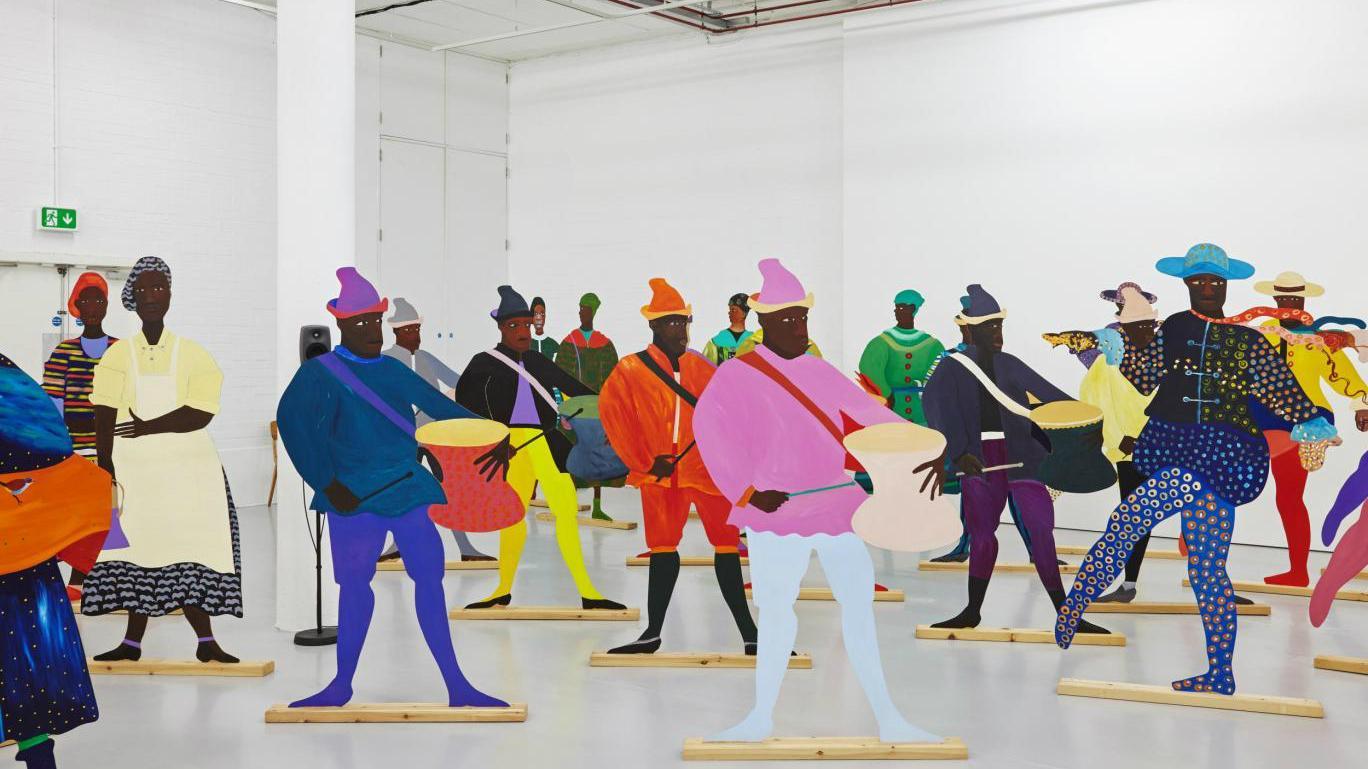This year’s Turner Prize takes place at the Ferens Gallery in Hull – named the ‘City of Culture’ for 2017 – and is one of the most diverse Turner Prize shows yet.
The recent removal of the age limit for nominations (previously it was only open to artists under 50) has allowed a broader scope of artists to showcase their work; every nominee this year is over 40, with 62 old year Lubaina Himid being the oldest nominee yet. However, the Turner Prize this year is not only ‘diverse’ in the age of its nominees, but also in the themes they tackle in their work. Despite Michael Dean’s sculptural work exploring poverty in the UK, last year’s Turner Prize was largely apolitical. While art does not always need to provide cultural commentary, with the 2010s (and 2016-17 especially) being the era of Donald Trump, the BLM movement and Brexit, it seems only right that the work presented in this year’s Turner should tackle issues of race, conflict and poverty.
Lubaina Himid has been dubbed by The Telegraph as the “under-appreciated hero of black British art”, and not only does her work aim to comment on issues such as slavery, but also the under-representation of black creativity and culture. This has been a cause that Himid has championed from the 1980s, when she staged a show to provide a platform for those artists she felt were under-represented within the Contemporary arts scene. In the age of cultural appropriation and white-washing, Himid’s celebration of black creativity seems more relevant, and more needed, than ever.
Another nominee who also focuses on race issues and black culture in his work is Hurvin Anderson, aged 52. Born in Birmingham to Jamaican Parents, Anderson works primarily with paint to produce images largely set in barbershops – significant locations within Afro-Caribbean communities – that explore themes of identity and representation. One of his key works displayed in the exhibition is “Is it Ok to be black” (2016), which, like Himid’s work showcases black culture in its inclusion of painted images of important black figures such as Martin Luther King, juxtaposed against more abstracted figures painted in gestural white strokes against rectangular black backgrounds to resemble photographs pinned onto a barbershop wall.

German nominee Andrea Büttner also pays close attention to current issues, with a large section of her Turner exhibition focusing on poverty and beggars. Büttner exhibits eight woodblock prints based on Ernst Barlach’s 1919 sculpture Verhüllte Bettlerin (Cloaked Beggarwoman), their simplification of form and flatness of colour heightening their immediacy so that the image of the beggar with her outstretched arms confronts the viewer. Whilst final nominee Rosalind Nashashibi has worked for years with printmaking and painting like her Turner counterparts, in this exhibition she displays two films, one made this year, Vivian’s Garden, and one made in 2015 named Electrical Gaza. Electrical Gaza contrasts scenes from everyday life in Gaza with those that reflect the current Gazan political situation, providing a different view of Gaza where devastating conflict and ordinary familial life coexist.
Despite the lack of instagrammable gold bums in this year’s Turner Prize, the exhibition proves its relevance by its confronting of a whole host of social and political issues that have come to the fore in recent years. Whilst the Turner Prize has championed YBAs in the past with the likes of Damien Hirst, Rachel Whiteread and Tracey Emin contributing to both the prize’s fame and controversy, if the Turner is going to celebrate the ‘best’ of British art, it seems only fitting to finally open up the nomination to include older artists. This decision therefore recognises those who have contributed to the British contemporary art scene for many years, but may not have had their ‘breakthrough’ as early as the YBAs of the 1990s. Indeed, this year’s Turner Prize exhibition is one of its most mature yet, not only being a generationally inclusive show, but one that celebrates artists from varying countries and cultures.
Hannah Stokes
(Image courtesy of Lubaina Himid/Stuart Whipps/Hollybush Gardens/National Museums, Liverpool)

